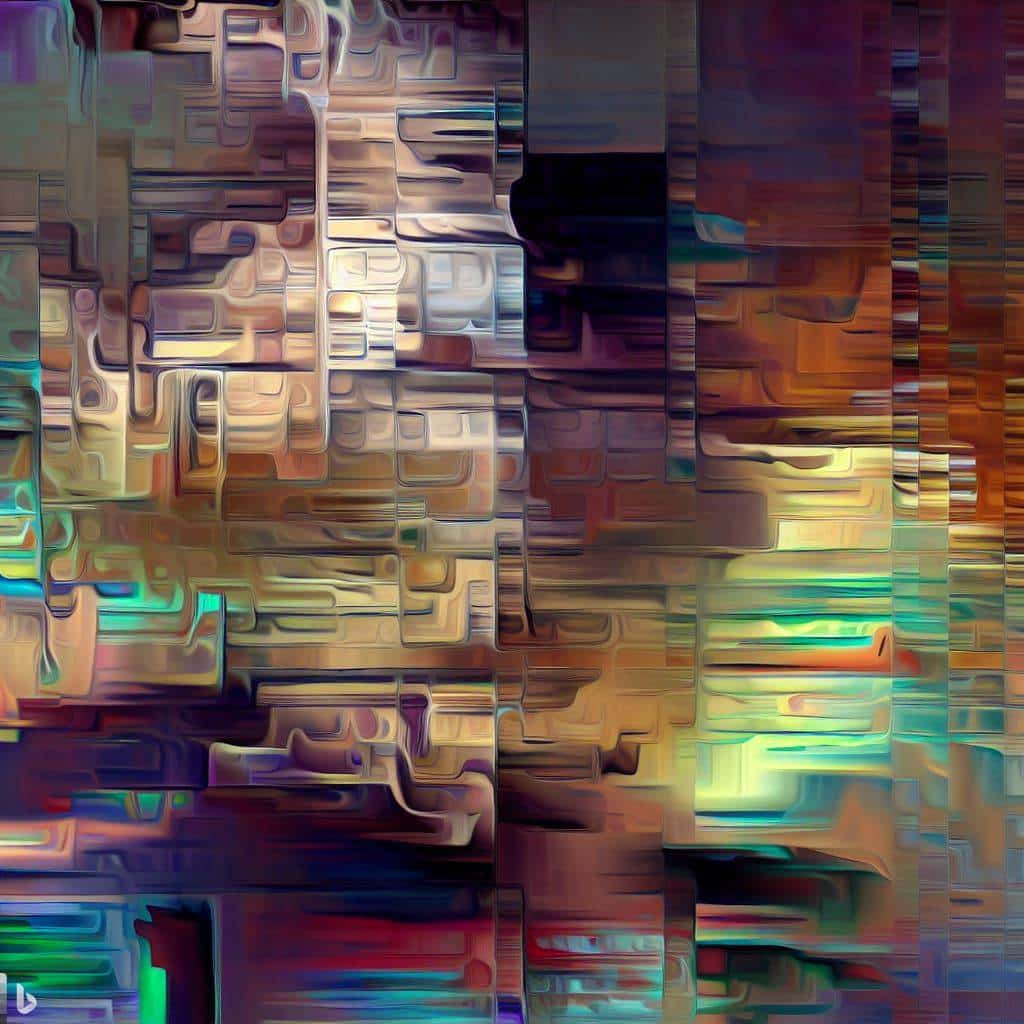Selling Digital Art
To sell or monetize your digital art, follow this section with “Selling Digital Art”. In this section, we’ll explore different techniques for selling digital art. You’ll learn about finding online platforms, creating a portfolio, and setting prices. These sub-sections will provide solutions for those who want to sell or monetize their art online.
Finding Online Platforms
The search for a suitable online platform to sell digital art can be daunting. Consider this:
- Look for marketplaces that focus on digital art.
- Check the size and reputation of the platform’s community.
- Examine the payment methods – secure and easy to use?
- See if there are any hidden or unexpected fees.
- Read the copyright policies regarding rights and permission.
Remember, a platform may not always work for each artist. Pick one that fits your needs, brand, audience, and artwork style.
Pro Tip: Get advice from other artists who have used the platform before.
Your digital art should be like a book – judged by its cover AND its content.
Creating a Portfolio
A varied digital art collection is key for impressing buyers and clients. Curate a portfolio with different styles, mediums, and subject matters to boost credibility and show versatility. Utilize online platforms and social media to share work and attract customers. Keep a neat, organized portfolio for easier client navigation.
Craft a digital art portfolio to draw new customers. Include quality images, descriptions, prices, and sizes to showcase talent and make purchasing decisions easier. Collaborate with other artists or participate in virtual exhibits for more exposure.
Engage with clients through feedback sessions or demos to build trust. Provide after-sales support like customizations or repair services to create loyalty.
Digital art is growing exponentially due to technology. Its popularity is expected to keep increasing due to online marketplaces. With the right curation, promotion, and customer engagement, selling digital art can be a lucrative endeavor. Set your prices higher than your self-esteem, but not as high as your therapist’s fees.
Setting Prices
To sell digital art successfully, assessing its worth and pricing it correctly is essential! Research market trends and pricing for similar art categories. Take into account production costs, your skill level, and target audience. Also, consider artistic novelty, technical aspects, and licensing rights. Analyze these elements to allocate values accurately.
For extra value, try subscription models or limited edition works. These tips will turn digital art into digital profit!
Monetizing Digital Art
To monetize your digital art, focus on the section on “Monetizing Digital Art” with sub-sections such as “Licensing Artwork,” “Creating Merchandise,” and “Crowdfunding Platforms.” These solutions can help you turn your artistic creations into a sustainable income stream. Keep reading to learn how to profit from your digital artwork without sacrificing your creative vision.
Licensing Artwork
Artwork Licensing is the legal process of allowing third parties to use, distribute, or reproduce digital artwork for free or a fee. Here’s a table of the three main types:
| Types | Description | Usage |
|---|---|---|
| Royalty-free | Paid once, no royalties | Multiple uses |
| Rights Managed | Pay per use | Limited usage period |
| Creative | Combination of both | Allows adjustments |
Artists must think about their artwork’s purpose when choosing a type. Licensing lets them make money online, but there are challenges like maintaining quality and reaching more people. To do this, they should be active on social media and build relationships with clients.
Success in Artwork Licensing may be increased by offering exclusive rights or package deals. Plus, research industry trends and pricing models. Transform digital art into physical products and watch your wallet get a little heavier and your hand cramp up from signing all those autographs!
Creating Merchandise
Digital creations can now be turned into merchandise, offering another revenue stream for creators! Here is a list of things you can create: t-shirts, mugs, phone cases, canvas prints, stickers, hoodies, posters, tote bags, framed prints, notebooks/journals, pins/buttons, and socks.
These are only some of the many options! Creators can be creative and think outside the box for more ideas. Plus, when you sell your designs as merchandise, it not only increases your earnings, but also acts as free advertising as people use your designs in their everyday lives.
Creating and selling merchandise has been a thing in the art world for centuries. For instance, Andy Warhol’s soup cans and Marilyn Monroe screen prints were sold at his exhibitions back in the 1960s. Nowadays, modern creators have more opportunities to monetize their digital creations with online platforms.
If you’re looking to make money from your digital artwork, why not try crowdfunding? Just be ready for any potential negative reactions if your mom ends up being your only backer!
Crowdfunding Platforms
Crowdfunding Portals can help artists monetize their digital creations. A space to gather funds or support from those who believe in the artist’s work. Here are 4 key points:
- A large user base offering financial support.
- Campaigns run for 30-60 days and creators keep their intellectual property rights.
- Must reach funding goal within allotted time to use funds.
- Crowdfunding Portals often take 4-9% of funds raised.
Competition is fierce, so thoughtful planning and dedication is needed. An engaged audience, active social media presence, and persuasive marketing strategies are all crucial. An example of success was a digital artist who used Kickstarter. Over one hundred supporters donated several thousand dollars, inspiring them to keep going. Turn your digital art into money – market it like the Mona Lisa on steroids!
Marketing Your Digital Art
To market your digital art with aim to sell or monetize it, building a following on social media, collaborating with brands, and participating in art contests are some solutions. These sub-sections can help you understand the importance of each approach and the benefits they may offer to sell your art more effectively.
Building a Following on Social Media
Harnessing the power of social media is key for promoting digital art. This can give credibility and more exposure, possibly resulting in more sales and recognition.
- High-quality content to show off your skills.
- Engage with other artists and customers.
- Trending hashtags or create a unique hashtag.
- Share work on multiple platforms.
- Offer exclusive content to incentivize followers.
To further boost your online presence, join online art communities and collaborate with other artists. This will help build relationships and introduce you to new fans.
Instagram is now the top platform for artists to build their careers. Optimize your profile with branding and use features like Stories or Reels to showcase your vision and connect with buyers.
Analyzing algorithms and data can inform marketing strategies. Experiment with different content formats and post at certain times to boost engagement.
Creating a social media presence takes time and effort but can be beneficial for your digital art career. Brag about brand collaborations to make a good impression without seeming desperate.
Collaborating with Brands
Grow and expose your digital art by connecting with relevant companies. Leverage their social media, emails, and websites to promote yourself. What’s more, partnering with established names in the industry boosts your brand awareness.
Make your art stand out by incorporating it into a broader context that appeals to buyers. Keep it authentic and offer value to the brand’s audience. Ensure mutual benefit exists and maintain clear communication.
70% of consumers are more likely to buy if the CEO of the company has a positive online presence. This means partnerships with brands can improve your reputation on social media platforms.
Ultimately, collaborating with brands leads to success. It provides invaluable connections and opens up revenue opportunities. Don’t just settle for likes on Instagram – enter an art contest and let the judges decide!
Participating in Art Contests
Participating in art competitions is a great way for digital artists to show off their talents and gain recognition. Here are some tips to help you succeed:
- Look into different contests and pick ones that fit your style and medium.
- Read all the rules and guidelines thoroughly.
- Submit top-notch images or videos that show off your artwork’s unique qualities.
- Write a captivating artist statement that describes your inspiration, process, and goals.
- Advertise your entry on social media platforms to reach more people and get support.
- Be patient and keep honing your skills for long-term success.
Put in extra effort to make your work stand out. Think about adding interactive elements or stories to your art. Judges appreciate originality, creativity, technical skill, and good execution.
For instance, the Frida Kahlo Art Lover held an online competition inspired by her painting “The Broken Column.” Participants from all over the world shared how Frida’s art had impacted their creative process. The winner won $5000 and international recognition.
Contests require time, effort, and dedication. But they open up avenues for artists to advance their careers while receiving feedback from industry professionals. So go on, explore different opportunities and take advantage of this beneficial resource!
Protecting Your Digital Art
To protect your digital artwork and prevent unauthorized usage, you need to copyright your work, add watermarks to your images, and take legal action against infringement. Copyrighting your work ensures that your art is protected under the law, while adding watermarks to your artwork makes it difficult for others to use your work without proper licensing or permission. Invoking legal action against infringement is another option you can take to protect your art from being misused.
Copyrighting Your Work
Secure Your Intellectual Property Rights!
Protecting your artwork is a must-do. Copyright laws give you exclusive rights to your creative work. Get a registered copyright to claim ownership of your digital art. Research legal requirements and registration process before applying.
Register with Copyright Office
US Copyright Office lets creators apply electronically or by mail. Complete application, submit fees, copies of work and get certificate of registration. Proof you own intellectual property rights!
Safeguard Artwork
Take extra steps to protect digital art beyond copyright. Watermark art with metadata info to identify those who steal or copy without permission. Secure storage, encrypted hard drives, cloud storage help protect data loss.
Pro Tip: Keep records of communication related to any infringement instances.
Watermarking artwork is like putting a lock on your diary – only the most determined will try to break in.
Watermarking Your Artwork
Protecting Art: Add Your Mark!
A great way to preserve the originality of your digital art is to add a watermark. Here are 6 steps to make it happen:
- Place your watermark and make it look part of your artwork.
- Pick a font that won’t overpower the artwork. Make sure it’s readable and the size is right.
- Include your name or website and pick a color that stands out.
- Use a transparent PNG file so it looks good on different backgrounds.
- Test it before you’re happy with it.
- Upload and print it in high quality with the same placement across all platforms.
Pick a unique and recognizable watermark. That way, it’ll be easy for people to know it’s your work.
Keep the watermark proportionally sized to the image when resizing. That way, your art won’t be distorted.
Artists have been using watermarks to protect their digital artwork for centuries. From Ancient Egypt to Ancient Greece.
Remember, if someone steals your art, you can take legal action. Let the court decide what’s fair.
Taking Legal Action Against Infringement
Fighting copyright infringement is vital to protect your digital art. Litigation can secure your intellectual property from unlawful use by others. This includes infringements of copyright and trademarks, as well as the misusing of confidential info and industrial designs. It’s essential to find an experienced lawyer who specializes in intellectual property law, as they know the laws around infringement and the best course of action.
For a successful case in court, you need evidence. Keep track of all infringement cases, like when it happened & the infringer’s name. Document any communication or agreements, such as emails, social media posts, contracts or other written communication. Evidence gives you a higher chance of success.
Legal action against copyright violations has a complex process that needs patience and preparation. Get an intellectual property lawyer. Their experience can reduce risks and increase chances of winning. Legal fees are high, so consider other methods like mediation or arbitration, which are cheaper but effective.
The Disney Vs Air Pirates case of 1971 is infamous. A group of underground comic artists made parodies of Disney characters without permission. Disney sued for copyright violation, claiming damages of $35 million because of their reputation among children audiences.
Q: What is digital art?
A: Digital art is art that is created digitally using tools such as graphics tablets, software, and other digital platforms. This can include digital paintings, illustrations, animations and designs.
Q: Can I sell my digital art online?
A: Yes, there are many ways to sell your digital art online. You can use marketplaces such as Etsy, create your own online store or sell your artwork on platforms that specialize in selling digital products.
Q: How can I make money with my digital art?
A: There are many ways to make money with your digital art. You can sell prints, offer services such as logo design or digital portraits, or create tutorials and workshops to sell on platforms such as Udemy or YouTube. You can also sell your art as non-fungible tokens (NFTs) or use print-on-demand services to make and sell physical products.
Q: What is an NFT?
A: An NFT is a non-fungible token that is a unique digital asset that is stored on a blockchain. It can represent digital art, music, videos, and other digital content, and can be bought, sold and traded like other collectibles.
Q: What is print-on-demand?
A: Print-on-demand is a service that allows you to upload your digital artwork to a website, and then create and sell physical products based on that artwork whenever a customer places an order. This means you don’t have to worry about creating and storing inventory.
Q: How do I start selling my digital art?
A: To start selling your digital art, you’ll need to create a digital product and choose a platform to sell it on. You can sell on marketplaces such as Etsy or create your own online store using e-commerce platforms like Shopify. Make sure to set a reasonable price and market and promote your product effectively.
Q: How much money can I make selling digital art?
A: There is no set amount of money you can make selling digital art. However, if you create high-quality artwork and market it effectively, you can make a good income selling your digital products.
Q: Can I sell digital fonts?
A: Yes, you can sell digital fonts online. There are many websites that specialize in selling digital fonts for designers to use in their projects.
Q: Do I need to be a digital artist to sell digital artwork?
A: No, you don’t need to be a digital artist to sell digital artwork. Anyone can create a digital product and start earning money with it, even if they have no experience in creating digital files. You can also hire a freelance graphic designer to create digital artwork for you.
Q: When should I charge for my digital art?
A: You should charge for your digital art whenever you feel it’s a good idea to do so. If you’ve put a lot of time and effort into creating your artwork, or if you’re offering a premium product that provides value to your customers, it’s a good idea to set a fixed price for it.










